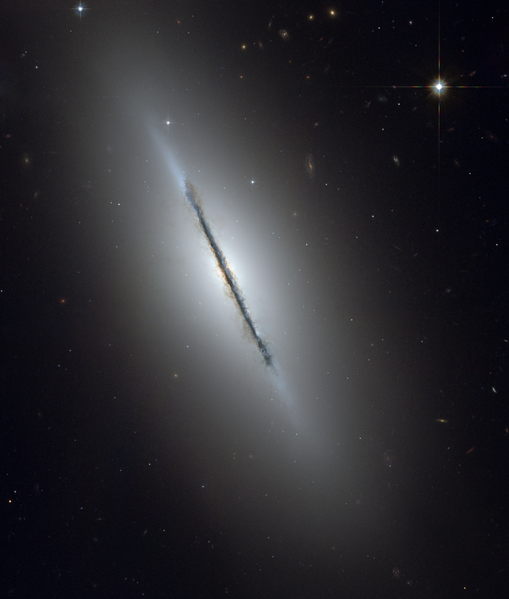Vaizdas:Ngc5866 hst big.png

Šios peržiūros dydis: 509 × 599 taškų. Kitos 6 rezoliucijos: 204 × 240 taškų | 408 × 480 taškų | 652 × 768 taškų | 870 × 1 024 taškų | 1 739 × 2 048 taškų | 3 190 × 3 756 taškų.
Pradinė rinkmena (3 190 × 3 756 taškų, rinkmenos dydis: 25,78 MiB, MIME tipas: image/png)
Rinkmenos istorija
Paspauskite ant datos/laiko, kad pamatytumėte rinkmeną tokią, kokia ji buvo tuo metu.
| Data/Laikas | Miniatiūra | Matmenys | Naudotojas | Paaiškinimas | |
|---|---|---|---|---|---|
| dabartinis | 18:38, 16 vasario 2009 |  | 3 190 × 3 756 (25,78 MiB) | Spencer | {{Information |Description={{en|1=From original NASA press release: :This is a unique view of the disk galaxy en:NGC 5866 tilted nearly edge-on to our line-of-sight. Hubble's sharp vision reveals a crisp dust lane dividing |
Rinkmenos naudojimas
Šis puslapis naudoja šią rinkmeną:
Visuotinis rinkmenos naudojimas
Ši rinkmena naudojama šiose viki svetainėse:
- Naudojama ab.wikipedia.org
- Naudojama ace.wikipedia.org
- Naudojama af.wikipedia.org
- Naudojama af.wikibooks.org
- Naudojama af.wikiquote.org
- Naudojama af.wiktionary.org
- Naudojama ak.wikipedia.org
- Naudojama als.wikipedia.org
- Naudojama am.wikipedia.org
- Naudojama am.wiktionary.org
- Naudojama ang.wikipedia.org
- Naudojama ang.wiktionary.org
- Naudojama an.wikipedia.org
- Naudojama an.wiktionary.org
- Naudojama arc.wikipedia.org
- Naudojama ar.wikipedia.org
- Naudojama ar.wikibooks.org
- Naudojama ar.wikinews.org
- Naudojama ar.wikiquote.org
- Naudojama ar.wikisource.org
- Naudojama ar.wikiversity.org
- Naudojama ar.wiktionary.org
- Naudojama arz.wikipedia.org
- Naudojama ast.wikipedia.org
- Naudojama ast.wiktionary.org
- Naudojama as.wikipedia.org
- Naudojama av.wikipedia.org
- Naudojama ay.wikipedia.org
- Naudojama ay.wiktionary.org
- Naudojama az.wikipedia.org
- Naudojama az.wikibooks.org
- Naudojama az.wikiquote.org
- Naudojama az.wikisource.org
- Naudojama az.wiktionary.org
- Naudojama bat-smg.wikipedia.org
- Naudojama ba.wikipedia.org
- Naudojama bcl.wikipedia.org
- Naudojama be-tarask.wikipedia.org
- Naudojama beta.wikiversity.org
- Naudojama be.wikipedia.org
Žiūrėti visuotinį šios rinkmenos naudojimą.